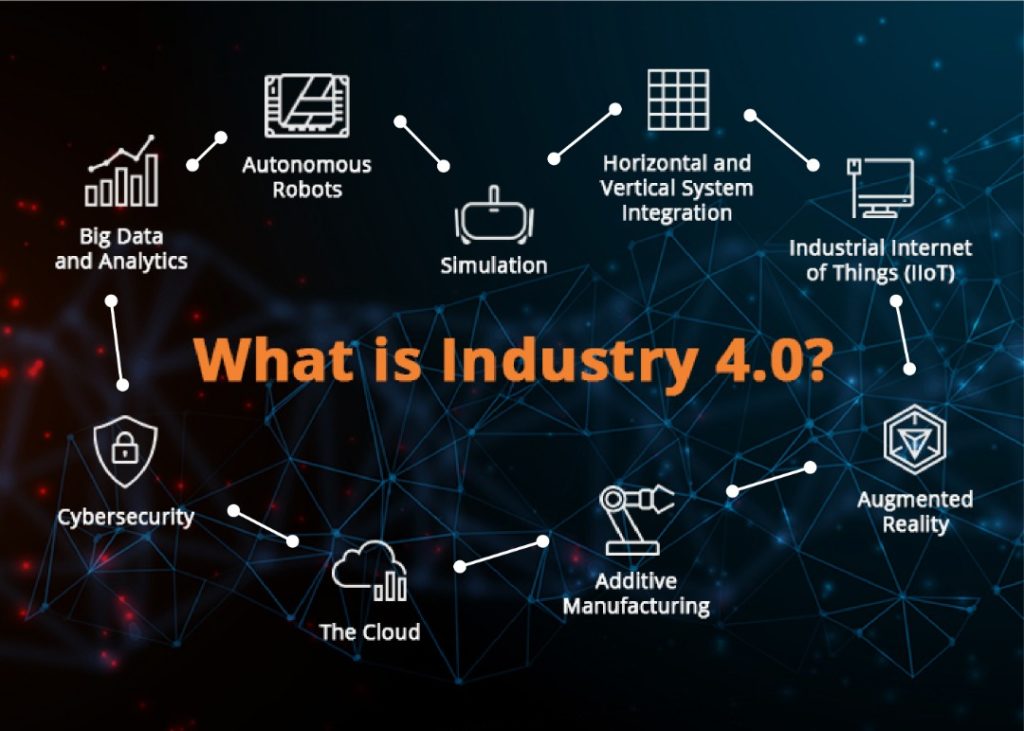The 4.0 transformation is characterized by the introduction of new digital technologies such as the cloud, IoT, AI, machine learning, etc.
This fourth industrial revolution, also called Industry 4.0, targets production flexibility and product customization to better meet customer demand, optimize production chains, improve site safety and promote innovation.
Industry 4.0 optimizes production
With industry 4.0, it becomes possible to develop products that perfectly meet customer expectations.
By managing to produce goods straight away free of any anomalies upstream, Industry 4.0 reduces non-quality (causing an average of 5% loss of turnover in 2017 according to AFNOR).
It increases customer satisfaction who no longer must send them back because of imperfection. And thus, the company improves its overall performance.
Industry 4.0 improves traceability and maintenance
Knowing in real-time in what state and where the products, vehicles, drums, pallets, etc., are is a crucial issue in the age of agility.
RFID chips or IoT trackers make it possible to optimize business know-how and thus make the company more responsive. The feedback of information in real-time allows precise visibility of its activity.
The company can thus offer predictive maintenance to anticipate breakdowns, and logistics 4.0 to supply its customers just in time by reducing business interruptions.
All branches of the economy are concerned with these innovative means of production, from car manufacturers to the raw materials industry, including mass distribution and the food industry. Here are some examples:
-
Mining takes full advantage of Industry 4.0 tools
A large global French mining and the metallurgical group took hold of these new tools very early on to rethink the way it extracts ore and transforms it completely.
He uses drones that carry out topographical surveys of inaccessible areas. They also operate environmental monitoring.
In addition, the group uses machine learning tools to manage the silico-manganese furnaces and anticipate the detection of process deviations. Connected sensors have been deployed to monitor and reduce water discharges.
Other sensors monitor the temperature of the furnace chimneys and anticipate any malfunctions. Also, thanks to sensors positioned on the tires of the trucks, the company was able to reduce the fuel consumption of its fleet by around 5% and extend the life of the tires by 1,500 hours.
In addition, AI was used to generate a digital twin of the mine from drone coverage. This made it possible to precisely control the supply chain of the ore.
-
Retail: data to improve the customer experience
Another example of industry 4.0 transformation with this retail giant which has joined forces with one of the GAFAMs to try to better meet customer requirements.
It uses AI to anticipate demand based on weather, societal and seasonal data. The analysis of the data reported allows predictive management of orders.
In addition, thanks to cameras positioned on the shelves and coupled with a stock management platform, alerts are issued when a product is incorrectly positioned or out of stock on the shelves.
Finally, an algorithm makes it possible to optimize the layout and assortment of products according to current needs and trends.
-
Industry 4.0: sensors to optimize workstations
Companies are trying to control the fluctuating costs of electricity and gas by predicting them more effectively.
Recently, a large industrial site integrated light sensors and presence detectors during its renovation.
The former can reduce energy expenditure by up to 30%, while the latter allows fine management of rooms and offices.
This helps to optimize the use of workstations and meeting rooms. Adapting the duration and the power of the lighting to the face-to-face also aims to reduce accidents at work.
- Manufacturers: augmented reality to resolve non-compliance
A large group of industrial and utility vehicles was facing a problem with the quality control of their engines.
Since non-compliance is not always visible to the naked eye on this type of complex and heterogeneous equipment depending on the model, he used augmented reality to reduce the risk of error.
A 3D virtualization of each engine is projected onto the actual models and viewed through a HoloLens headset.
The operator is thus able to compare the two models, virtually remove a part, check the connections, etc. The result is a reliable, simple, fast, and scalable control procedure with the addition of reminders and correctives.


